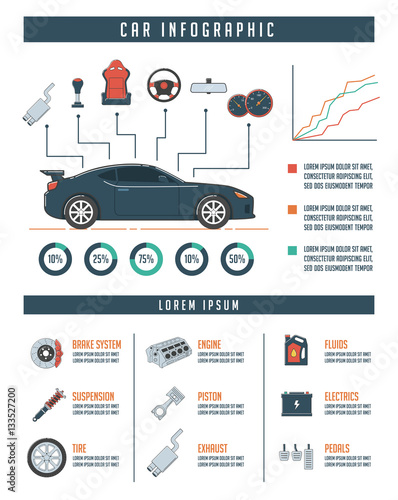Decoding Your Automobile'S Caution Indicators: What They Absolutely Represent
Decoding Your Automobile'S Caution Indicators: What They Absolutely Represent
Blog Article
Write- https://autofrontsuspension83726.topbloghub.com/36231393/improve-your-auto-detailing-capacities-with-seasonal-methods-to-preserve-your-automobile-s-shine-and-defense-reveal-techniques-to-get-rid-of-the-details-obstacles-of-every-season Written By-Lauritsen Stark
When you lag the wheel, those beautiful caution lights on your control panel can be a little bit bewildering. Do you understand what they're trying to inform you regarding your auto's health and wellness? Comprehending the value of these lights is vital for your safety and the longevity of your vehicle. So, the following time among those lights appears, would not you want to understand its message properly and take the required actions to address it?
Common Warning Lighting and Interpretations
Determine common warning lights in your automobile and comprehend their definitions to guarantee safe driving.
One of the most regular caution lights include the check engine light, which signals problems with the engine or emissions system. If this light begins, it's important to have your automobile checked immediately.
The oil pressure advising light shows reduced oil pressure, requiring instant interest to stop engine damage.
https://ecutuningshopsnearme29406.mybuzzblog.com/9528950/seasonal-vehicle-describing-tips-preparing-your-automobile-for-every-season blinking battery light may recommend a malfunctioning billing system, possibly leaving you stranded otherwise resolved.
interior cleaning tracking system (TPMS) light alerts you to reduced tire stress, affecting lorry security and gas performance. Overlooking this might bring about hazardous driving problems.
The abdominal light shows a problem with the anti-lock stopping system, endangering your capacity to quit swiftly in emergency situations.
Lastly, the coolant temperature level cautioning light warns of engine getting too hot, which can lead to serious damage if not fixed quickly.
Recognizing https://www.prnewswire.com/news-releases/cox-automotive-acquires-trudell-parent-company-of-trudell-trailers-and-northeast-great-dane-301590813.html will certainly help you attend to concerns promptly and maintain safe driving problems.
Value of Prompt Focus
Recognizing the typical warning lights in your auto is just the primary step; the significance of promptly resolving these warnings can not be highlighted sufficient to guarantee your safety when traveling.
When a warning light brightens on your dashboard, it's your auto's means of communicating a possible problem that needs attention. Neglecting these warnings can result in more serious troubles later on, endangering your safety and security and possibly costing you a lot more in repairs.
Motivate interest to advising lights can avoid breakdowns and accidents. For example, a flashing check engine light could suggest a misfire that, if left unattended, could create damages to the catalytic converter. Addressing this immediately can save you from a costly repair work.
In a similar way, a brake system alerting light may signify low brake liquid or worn brake pads, essential components for your safety when driving.
DIY Troubleshooting Tips
If you discover a warning light on your control panel, there are a couple of do it yourself troubleshooting tips you can try prior to looking for professional assistance.
The initial step is to consult your auto's guidebook to recognize what the specific caution light indicates. In some cases the issue can be as easy as a loosened gas cap causing the check engine light. Tightening up the gas cap may settle the trouble.
Another common problem is a reduced battery, which can cause different cautioning lights. Inspecting the battery connections for rust and guaranteeing they're safe and secure might repair the trouble.
If a caution light lingers, you can attempt resetting it by detaching the automobile's battery for a couple of minutes and afterwards reconnecting it. In addition, examining your vehicle's liquid levels, such as oil, coolant, and brake liquid, can aid fix cautioning lights related to these systems.
Conclusion
To conclude, understanding your auto's warning lights is necessary for maintaining your car running efficiently and securely. By promptly dealing with these alerts and recognizing what they imply, you can prevent pricey fixings and potential failures.
Remember to consult your cars and truck's guidebook for certain information on each warning light and take action appropriately to make certain a hassle-free driving experience.
Keep informed, remain risk-free when driving!
